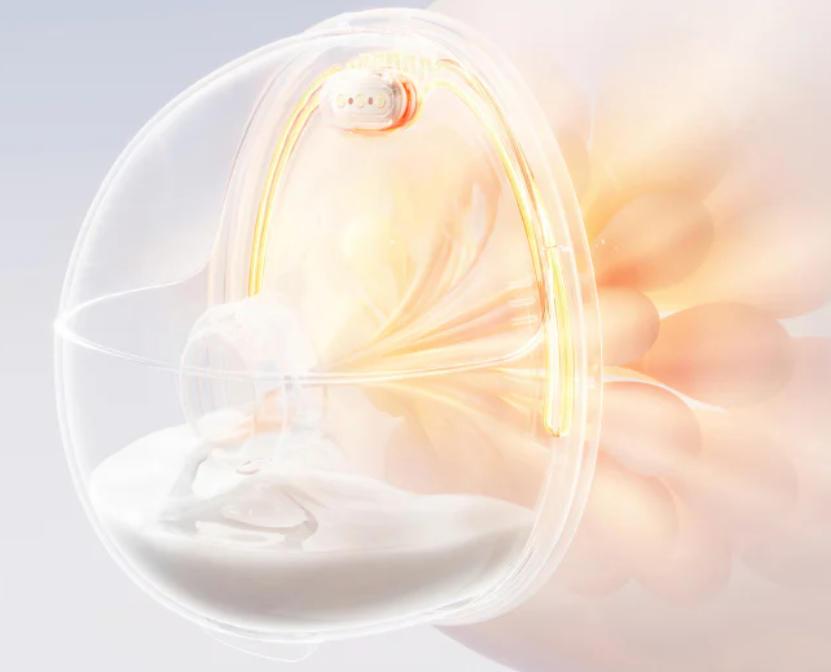Wearable breast pumps have revolutionized how breastfeeding mothers can express milk, offering an unprecedented level of convenience and mobility. Their compact designs and intuitive interfaces allow mothers to continue daily activities while pumping. Understanding how these devices function is key to maximizing their benefits. This guide explores the mechanics behind wearable breast pumps, providing insight into their core components, the pumping process, and the advanced features that make them a popular choice among modern mothers.
The Core Components of a Wearable Breast Pump
Motor, Suction, and Flange System Explained
The motor in a wearable breast pump generates the suction needed for milk extraction, operating in cycles that mimic a baby’s natural nursing rhythm. The flange is a crucial component that fits over the breast, forming a seal to ensure effective suction. Its size and shape can vary to suit different users, emphasizing the importance of a good fit for optimal performance. Together, these components create a seamless process that facilitates efficient milk expression, catering to the specific needs of nursing mothers.
Battery and Power Source Design
Wearable breast pumps typically rely on rechargeable batteries, providing the freedom to pump without being tethered to an outlet. This design enhances usability, allowing mothers to pump on the go. Battery life is a crucial consideration, often varying by model, with some offering several sessions on a single charge. Advanced models include power-saving features, ensuring that the pump remains functional throughout the day. This autonomy is a standout feature, offering flexibility and reducing the stress associated with milk expression.
Milk Collection and Storage Setup
The collection process is simplified with integrated containers that fit discreetly within the pump unit. Milk flows directly into these containers during pumping, preventing spills and ensuring hygiene. Models may offer various storage capacities, tailored for different expression volumes. Some units are designed to work with standard storage bags or bottles, facilitating easy transfer and refrigeration. This integrated setup prevents leakage and ensures that the expressed milk is safely stored, ready for future use.
Step-by-Step Pumping Process
Positioning and Fit for Proper Suction
Achieving proper fit and positioning is crucial for effective milk expression. Users need to ensure that the flange comfortably surrounds the breast, creating a tight seal to enhance suction. Correct positioning prevents discomfort and maximizes milk output. Many pumps include adjustable components or come with a range of flange sizes, accommodating diverse body types. These adjustments are critical, as they influence the efficiency of the pumping process and the overall user experience.
How Expression and Stimulation Modes Work
Wearable breast pumps feature expression and stimulation modes, each serving a distinct function in the pumping process. Stimulation mode mimics a baby’s initial rapid sucking to stimulate milk flow, whereas expression mode employs deeper, slower suction to extract milk. These modes can usually be customized in terms of speed and intensity, allowing users to tailor the experience to their comfort and needs. This versatility enhances the effectiveness of milk extraction, promoting better results for the user.
Pumping Duration and Cycle Automation
Automated cycles in wearable pumps guide the duration of each session, making pumping less cumbersome for users. Pre-set programs manage the transition between stimulation and expression phases, ensuring consistent performance without manual adjustment. Cycle length varies, typically ranging from 15 to 30 minutes depending on individual requirements. Automation simplifies the process, freeing the user from constant monitoring and enabling a more relaxed pumping experience, integral to the design of these devices.
Wireless and Smart Features in Action
Hands-Free Wearability and Mobility
Wearable pumps are designed for hands-free use, fitting comfortably inside clothing to provide discreet milk expression. This feature allows mothers to multitask, performing daily activities without disruption. The compact and lightweight design ensures that users can move freely, whether at home or on the go. This mobility is a hallmark of wearable pumps, significantly enhancing the user’s quality of life and accommodating a busy lifestyle.
App Controls and Real-Time Monitoring
Integration with smartphone apps represents a leap forward in breast pump technology. These apps offer controls for adjusting settings remotely and provide real-time data on pumping sessions. They may track milk volume, session duration, and battery life, giving users vital insights into their pumping habits. This connectivity not only enhances convenience but also empowers mothers with information that can help optimize milk expression and manage their breastfeeding journey more effectively.
Noise Reduction and Discreet Operation
An important advantage of wearable pumps is their ability to operate quietly, reducing the stigma and inconvenience associated with traditional pumps. Noise-reduction technology allows mothers to pump without drawing attention, whether at work or in social settings. This feature plays a significant role in normalizing breastfeeding and making the experience more comfortable. The discreet operation of wearable pumps reflects a commitment to user privacy and consideration of their environment.
Safety, Hygiene, and Maintenance Essentials
BPA-Free and Skin-Safe Materials
Safety is paramount in the design of wearable breast pumps, with materials selected to ensure no harmful substances come into contact with the user or milk. BPA-free plastics are standard, emphasizing health and safety. Furthermore, components that touch the skin, such as the flanges, are made from materials tested for skin compatibility to avoid irritation or allergic reactions. These considerations are integral to providing a safe and comfortable pumping experience.
Cleaning Protocols for Reuse
Proper cleaning is essential to maintain hygiene and ensure the longevity of the pump. Most wearable pumps are designed with parts that can be easily disassembled and sterilized. Procedural guidelines are provided by manufacturers, typically involving rinsing, boiling, or using a dishwasher-compatible cleaning option. Regular cleaning prevents bacterial build-up, ensuring that each pumping session is safe and effective for the mother and baby.
Preventing Leaks and Ensuring Seal Integrity
Leak prevention is a priority in the design of wearable pumps, with seals engineered to maintain integrity during use. Effective sealing requires the correct assembly and positioning of pump components. Regular inspections for wear and tear, especially over prolonged use, can help maintain the pump’s functionality. This attention to seal integrity ensures that the pump remains effective, minimizes the risk of leaks, and maintains the confidence of the user.
Conclusion
Wearable breast pumps offer a blend of innovation and convenience, transforming the breastfeeding experience for modern mothers. They encapsulate advanced technology, from seamless suction mechanisms to smart connectivity features, while emphasizing safety and ease of use. By understanding how these devices function, users can fully leverage their benefits for efficient and hassle-free milk expression. This guide has outlined the essential aspects, empowering users to identify the best wearable breast pump for their needs and enhance their breastfeeding journey.

Oliver Smith is an experienced blogger at Grammar Globe, Oliver Smith, an expert in English grammar and a master of wit, brings language to life with his playful take on puns. Through his works, he weaves humor into the rules of grammar, making learning fun and engaging for readers of all ages. Discover language with a smile!”







